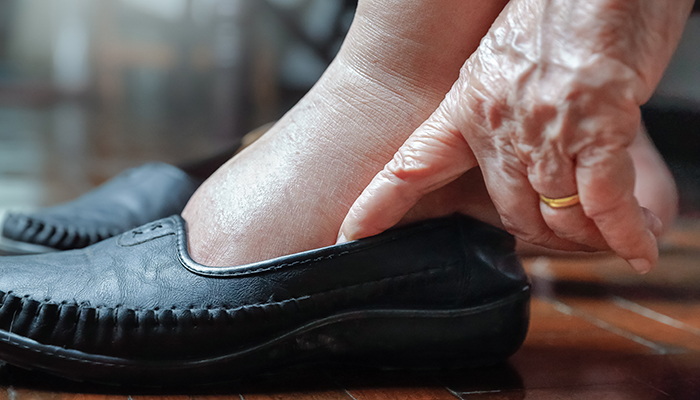
Many older adults experience swollen legs and feet. For some, it’s because of sitting a lot and leading a sedentary lifestyle. For others, it’s the water retention side effect of a medication. And for others, the swelling—called “edema”—is a symptom of a chronic or even serious illness such as heart failure or liver or kidney disease.
Additional signs of edema include difficulty walking, stiff joints, a sudden weight gain (2–3 pounds in a 24-hour period), or skin that is stretched, shiny, discolored, or painful. If you suspect your loved one has edema, ask the doctor to do a thorough workup.
Strategies that might help
- Elevate. Sit or lie with feet elevated, ideally higher than the heart. Let gravity do some of the work!
- Reduce sodium. Too much of this important mineral can cause the body to hold onto fluids. Ask about the best salt substitute for your loved one. Use herbs, lemon juice, and other condiments to add flavor to food.
- Wear compression socks. Ask the doctor for a fitting. These special socks may be helpful for keeping fluid from settling in the feet.
- Check shoe fit. Tight shoes can contribute to fluid retention. In turn, fluid retention can cause shoes to become uncomfortably tight. Try a bigger size.
- Exercise. Getting up and moving around helps the heart and veins do their job of keeping fluids where they belong. Walking and swimming are recommended.
- Monitor drinks/fluids. Some conditions are best managed with limited fluid intake. Others do better with more fluids. Find out which is best for your relative’s situation.
Ask the doctor which of these strategies are best for your loved one’s condition.
Keep the legs and feet clean and dry. Use moisturizing lotion, but not between the toes. Inspect daily for cracks and inflammation. Split, dry skin can become painful and infected, causing even more health problems.

